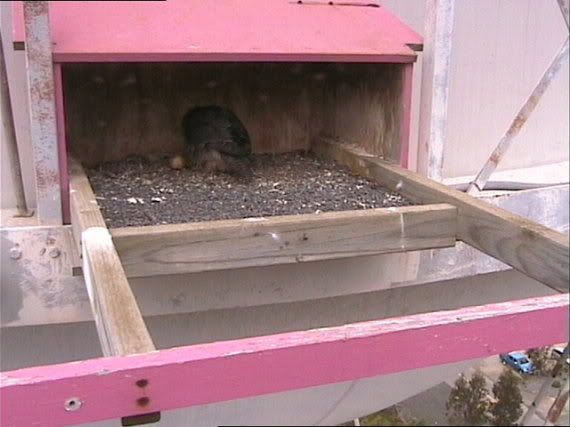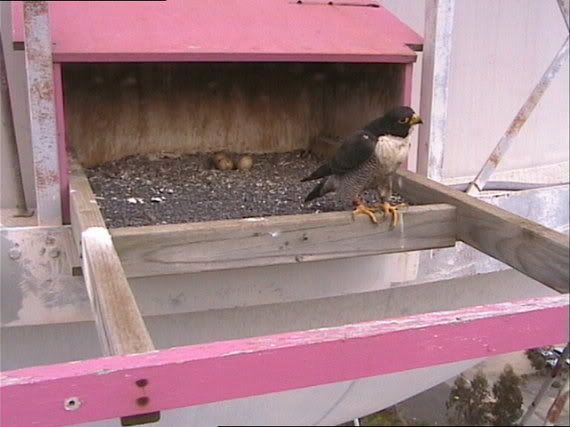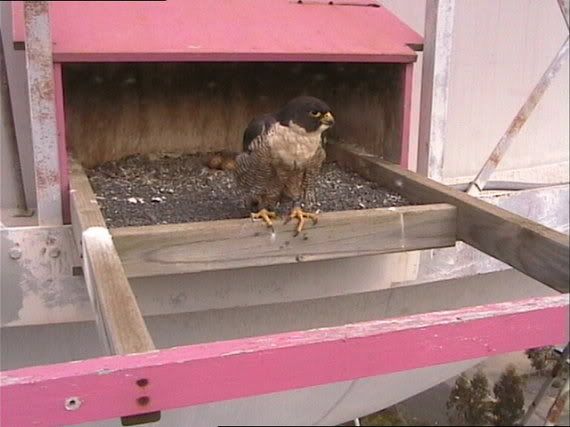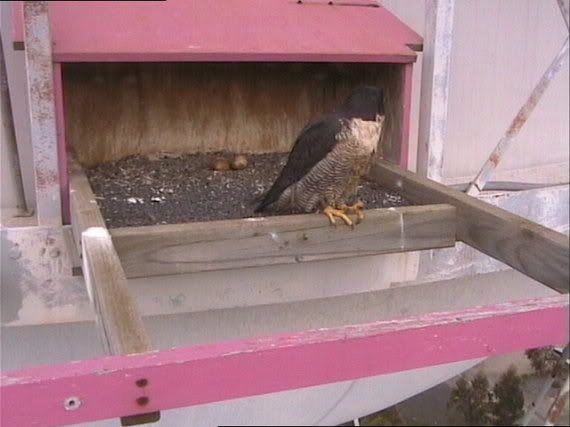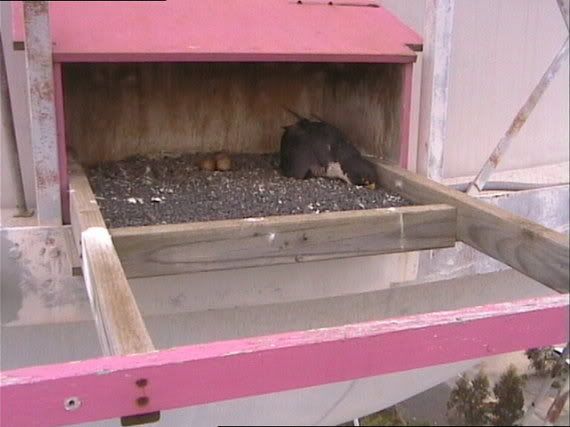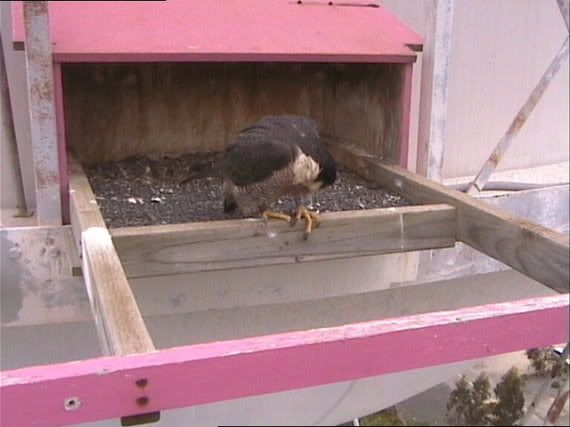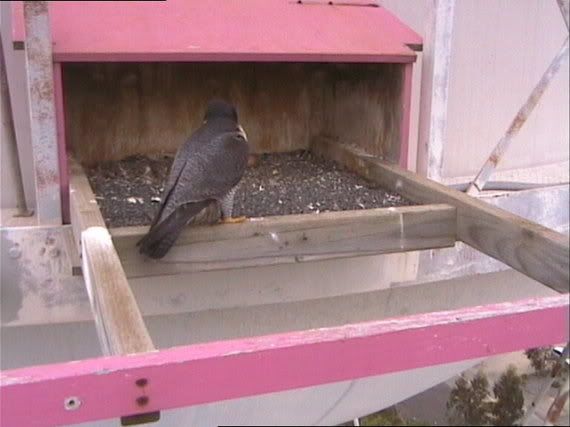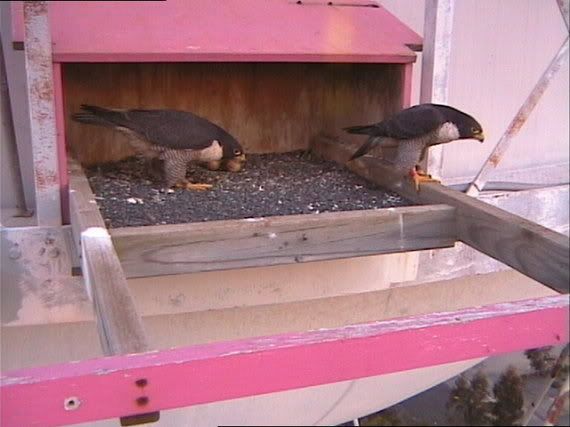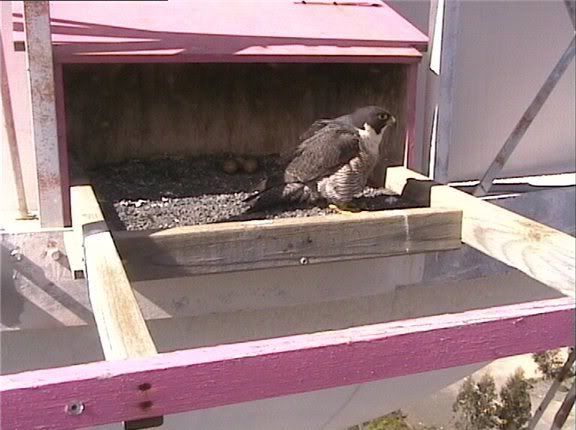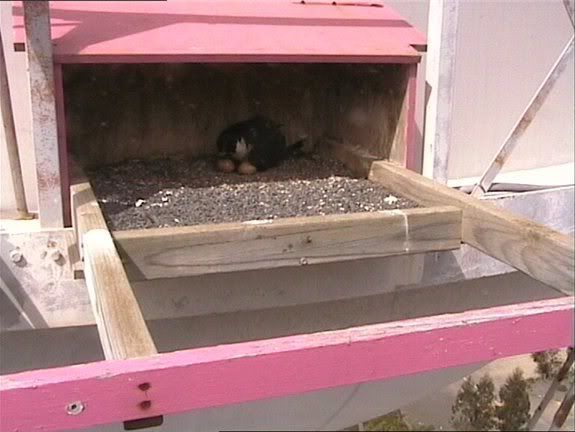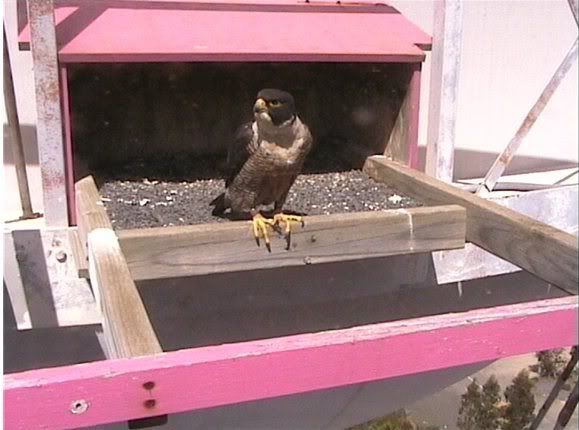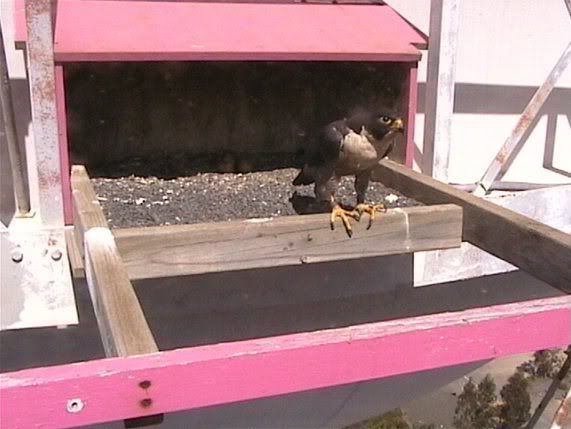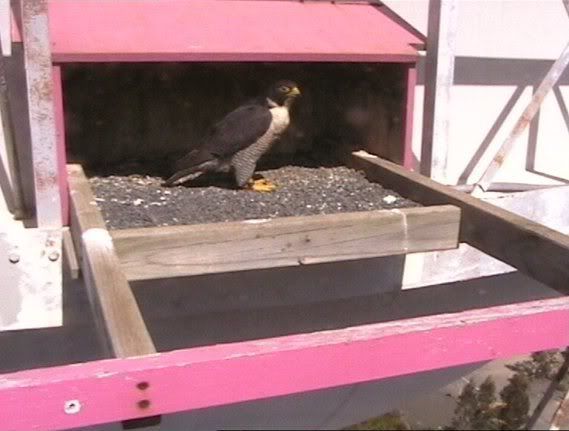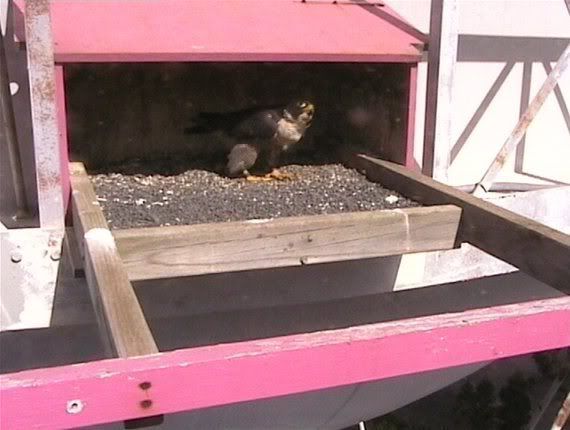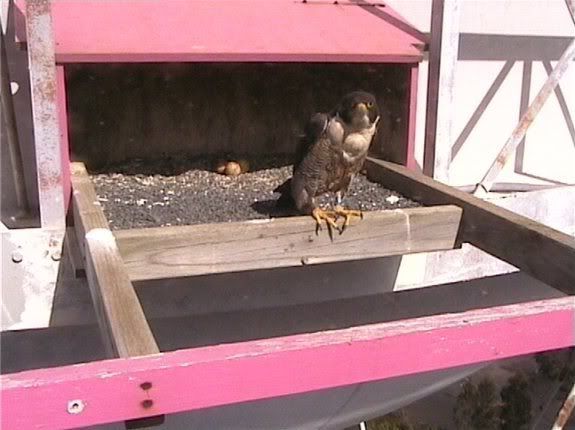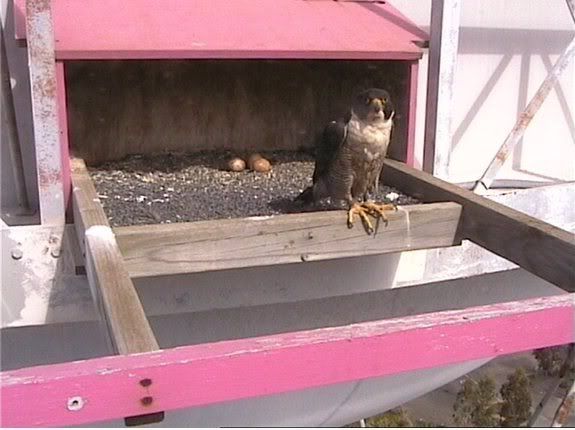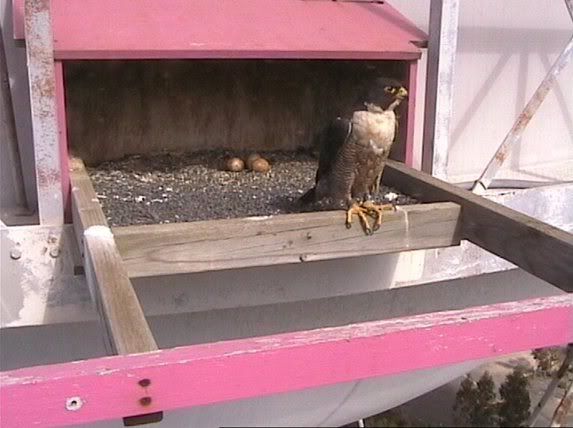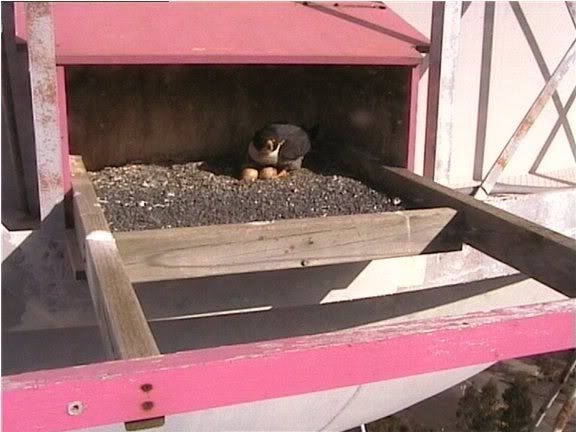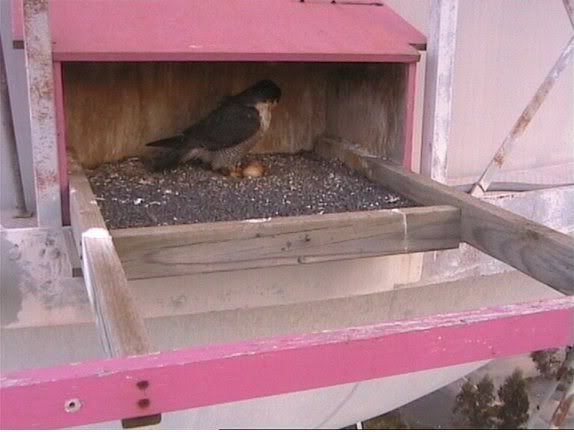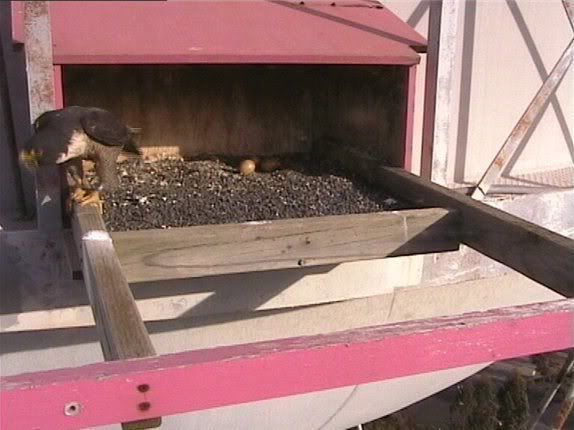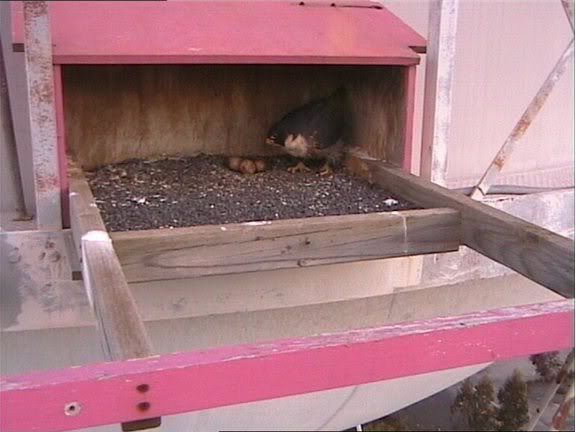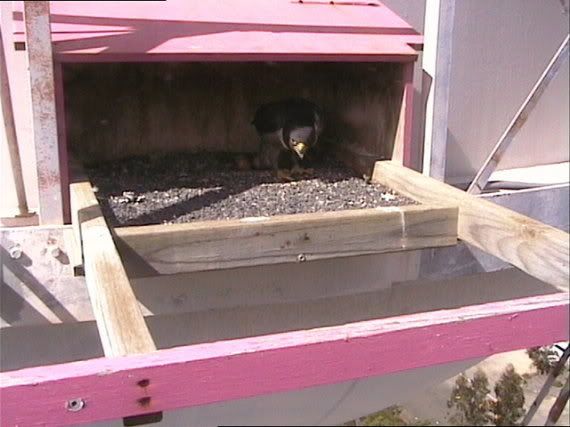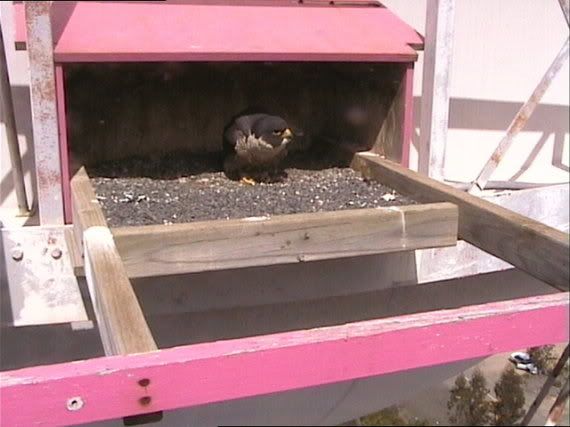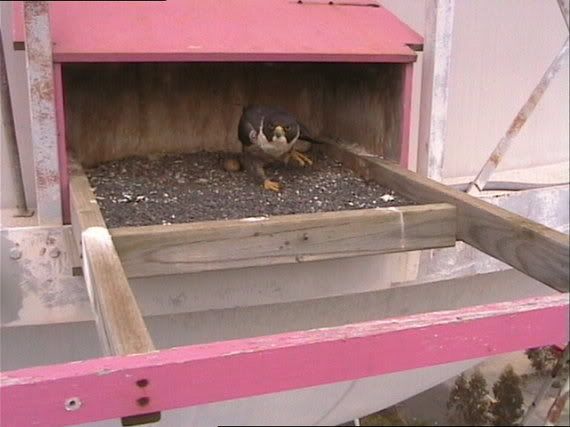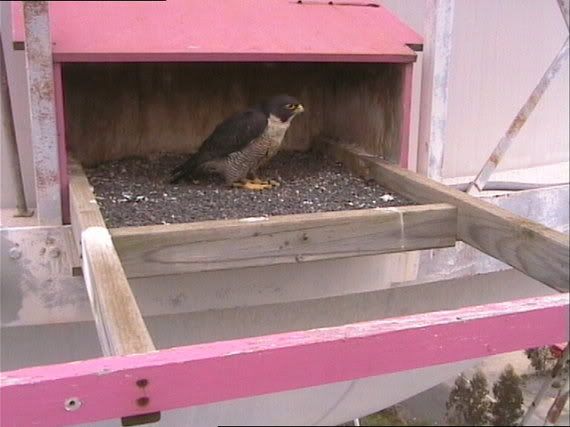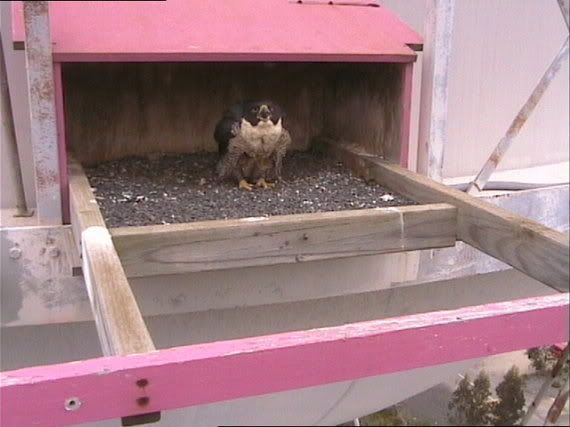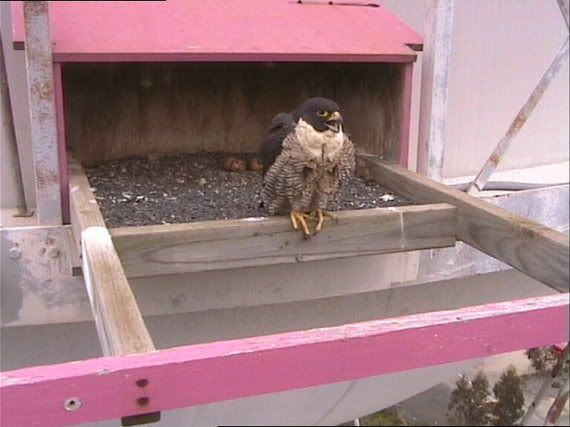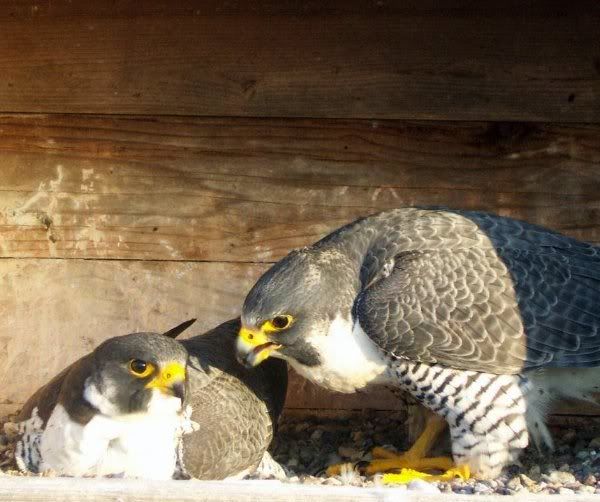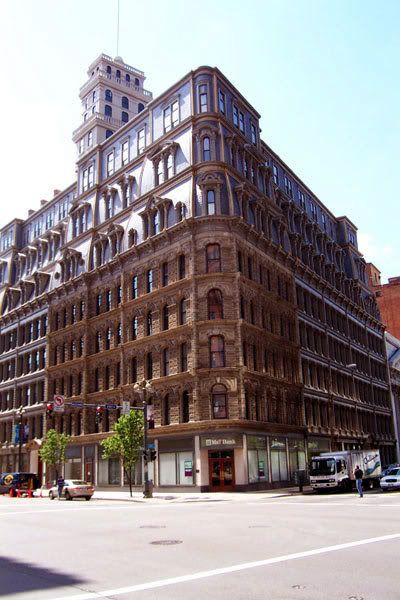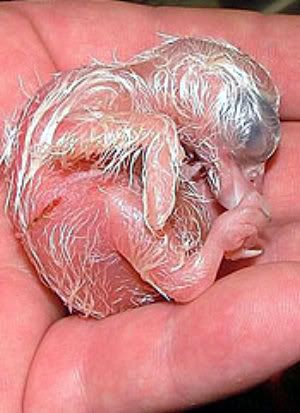
Picture courtesy of Colin Pass
Well, we are almost there. The first egg was laid on August 29 and the second on August 31. The Peregrine falcon starts incubation after laying the second to last egg. So August 31 is the first day. That makes September 30 the 31 day. Incubation takes 31-33 days, sometimes 35 days when the breeding couple have left the eggs often. F.i, due to territoraila disputes. That has not been the case here.
Hatching takes about 48 hours from the first pip in the shell membrane untill the actual hatch.
In the last 2 days before hatching final preparations are made for a succesful hatchproces!
* The beak turns towards the air cell.
* The beak breaks through the inner shell membrane.
* The lungs begin to function.
* The yolk sac begins to enter the body cavity.
* The lungs are using the air cell for breathing completely.
* The embryo occupies all of the egg except air cell.
* The neck begins to spasm.
* The egg tooth pips through the shell.
* Exhausted and wet - but alive - the chick has hatched!
There is a lot going on inside. A major operation! How does that tiny creature get him or herself out of the eggshell, out of it's tiny sophisticated incubator. That is quite a job and do not underestimate the enormous lot of energy this must take. Making the escape is a proces that takes many hours. From the first pip to actually hatching can take over 12 hours.
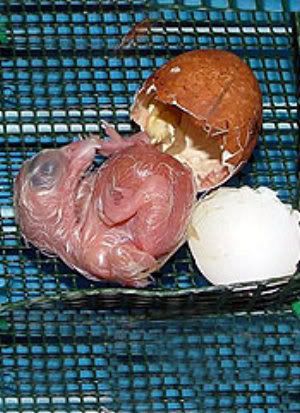
Picture courtesy of Colin Pass
About three days before hatching, the embryo's head burrows beneath the right shoulder so the beak is positioned under the wing; against the two membranes separating the embryo from the air space at the large end of the shell. Sometime that same day, due to oxygen depletion, the beak pierces through the membranes into the air space; pulmonary respiration begins.
The little chick is starting to make sounds as well, a very weak shri-shri-shri is coming from within the egg. From alle eggs that are in this stage. The little ones are telling eachother to hatch too, so all of them hatch after eachother with little time interval.
About a day later, with a dwindling oxygen supply, the embryo begins to kick, to twist and to thrust its head and beak backward, until the eggtooth pips the first hole. The chick can now draw breath. As fresh air enters the shell and circulates, the membranes inside begin to dry, and the blood vessels within those membranes begin to shrink.
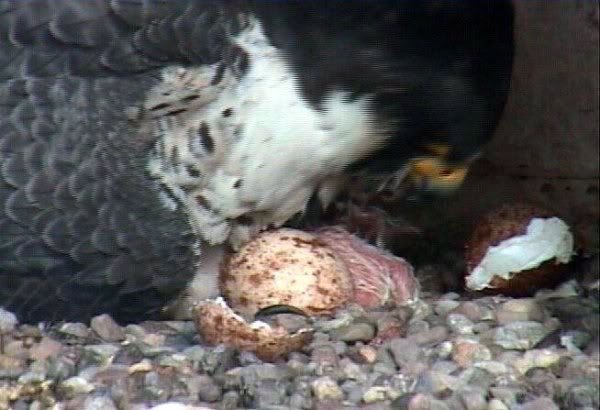
The embryo continues to pip, kick and twist. Small cracks advance counter-clockwise by millimeters around the big end of the shell. A special "hatching muscle" on the back of the chick's neck swells to several times its normal size with a great influx of fluid from the embryo's lymphatic system. Testosteron is catalysing this. The swelling accentuates sensory signals sent through the neck, stimulating the embryo to further activity. Eventually, the cap of the egg is cracked enough. The embryo pushes it off, unfolds from the tuck, and escapes from the shell.
http://www.falconquester.co.uk/peregrines.htm

